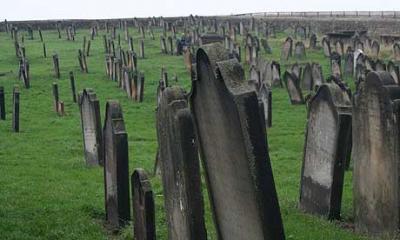|
Bram Stoker's Dracula: One of the most popular stories ever told,
Dracula has been re-created for the stage and screen hundreds of times in the last century. Yet it is essentially a Victorian saga, an awesome tale of thrillingly bloodthirsty vampire whose nocturnal atrocities reflect the dark underside of a supremely moralistic age.
Above all, Dracula is a quintessential story of suspense and horror, boasting one of the most terrifying characters in literature: centuries-old Count Dracula, whose passions prey upon the innocent, the helpless, the beautiful.
Dracula remains his most celebrated and enduring work - even today this Gothic masterpiece has lost none of the spine-tingling impact that makes it a classic of the genre.
Bram Stoker and Whitby: The true home of Dracula,
Bram Stoker found some of his inspiration for Dracula after staying in the town, Whitby in Scarborough, West Yorkshire. He stayed in a house on the West Cliff (the Crescent).
Stoker found a general history book at the Whitby Library (which was near the Quayside originally).
There seems to be little doubt that Whitby is where he discovered the name. There is no evidence that he found any more information about him anywhere else. He may have, but there is nothing to suggest it in his notes or in the novel itself.
If you should visit Whitby in the near future, please be warned: there are those who say that Dracula (or his spirit) is still present in the town.
"But, strangest of all, the very instant the shore was touched, an immense dog sprang up on deck from below ... and running forward, jumped from the bow on to the sand. Making straight for the steep cliff, where the churchyard hangs over the laneway to the East Pier
... it disappeared in the darkness."
from Dracula
by Bram Stoker, 1897
The dog was known to be one of the many forms into which a vampire could transform itself. Count Dracula had arrived in England.
|

